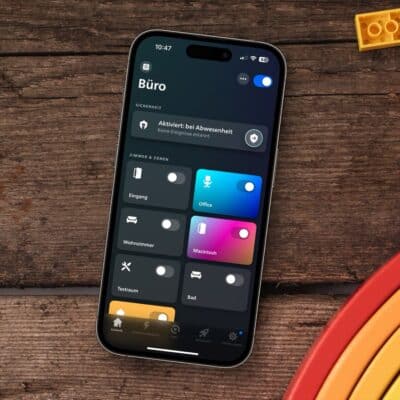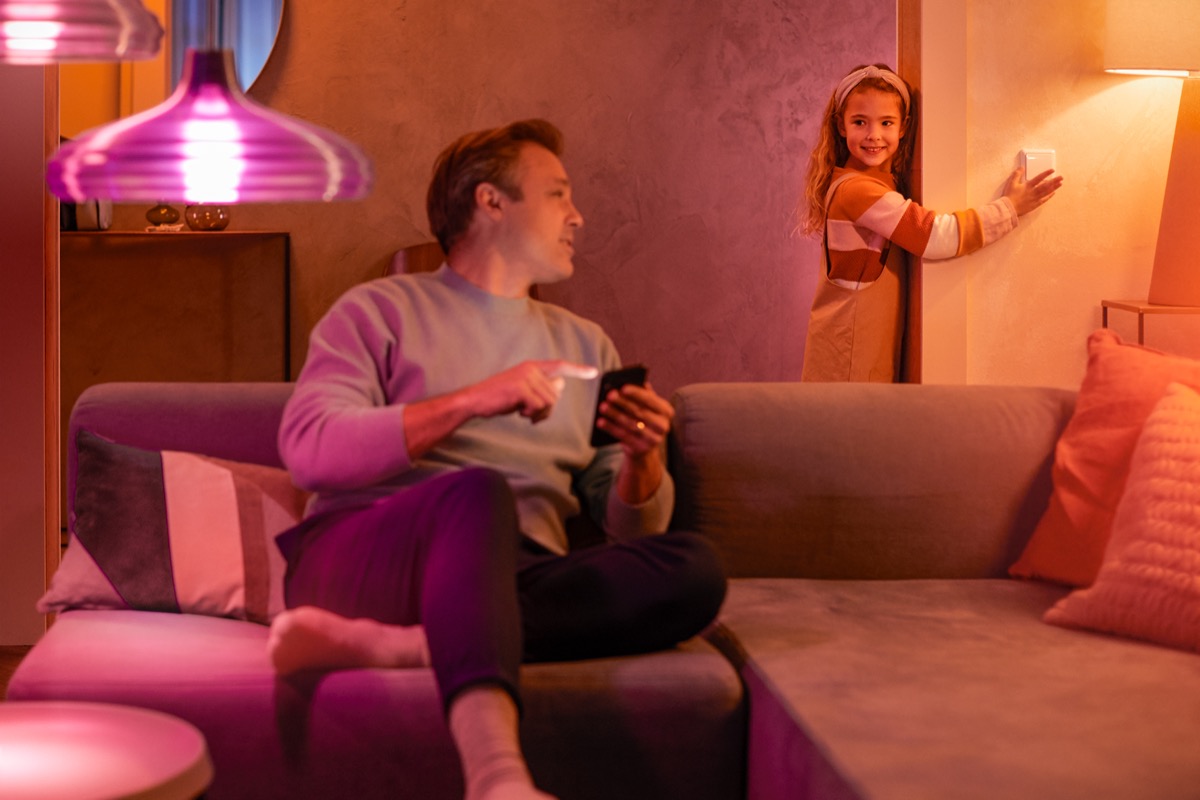On Thursday, Philips Hue introduced the new wall switch module. An announcement I was very excited about – and not just since a few days. After all, I have been following the development of the module for some time now, even though I have never been able to hold it in my hands myself.
Few of you will remember the wording of the announcement Philips Hue made at CES 2020 in January last year. At the time it said: “Insta, a German specialist in smart building technology, has also joined the ‘Friends of Hue’ programme.”
Almost everything turned out quite differently
A short time later, I made contact with Insta, since the manufacturer’s headquarters is only an hour’s drive away. The new product was to be presented to me at Light+Building in Frankfurt. But as we remember, everything turned out differently. The fair was cancelled and I had to wait a few weeks until the new product was presented to me.
When I then received the first detailed information, I was quite excited. A in-wall module with which you could turn a classic light switch into a Hue-compatible light switch. And that’s what probably fascinated not only me, but also Philips Hue itself.
Our favourite manufacturer already joined forces with Insta some time ago and declared the development of the product, now presented under the name Philips Hue Wall Switch Module, more or less a top priority. While the hardware continues to be produced by Insta, which has already been working with switches for decades, Philips Hue takes care of the software, marketing and distribution. A cooperation that definitely has a lot of potential – because after all, the product solves a problem that every Philips Hue user has probably already dealt with.
By the way, the challenge has become even greater for Philips Hue now that they sell the module under their own name. The product is no longer only accessible to Hue gurus and electrical experts. It also has to be understandable for beginners who are not very familiar with the technical background and details.
Why battery criticism and Shelly comparison are nonsense
Plug-and-play, that has always been the approach of Philips Hue. And that will not change with the Wall Switch Module. Anyone who can install a ceiling light or wall light will also be able to install the in-wall module. It is not without reason that Philips Hue relies on a small button cell for the power supply instead of making the user handle the (possibly non-existent) neutral wire during installation.
It is precisely this button cell that caused a lot of critical comments after the announcement. It would be too much effort to change them. Philips Hue claims a battery life of at least five years, probably even a few more. And even if you end up having to unscrew a multiple frame from the wall – the time required should not be a big deal given the functionality.
Using a Shelly, you wouldn’t have to change batteries, plus you pay less and get more features too. I have also had to read such comments again and again in recent days. I’ll say it directly: Those who think that a Shelly is the better solution for them should please buy a Shelly. In the end, this should only be a small part of the Hue users – in contrast to the large masses who, thanks to the easy-to-install and, above all, easy-to-configure solution, no longer have to deal with switched-off light switches and unreachable Hue light sources.
For me personally, there is only one point at the moment that I am a little unhappy about: In rooms where the ceiling light is controlled with several switches, a separate wall switch module is necessary for each light switch. Here I’m still unsure whether the solution presented this week is really the best of all worlds. In the rooms where there is only one light switch, I will definitely install the new Philips Hue wall switch module.
Note: This article contains affiliate links. We receive a commission for purchases via these links, which we use to finance this blog. The purchase price remains unchanged for you.
































